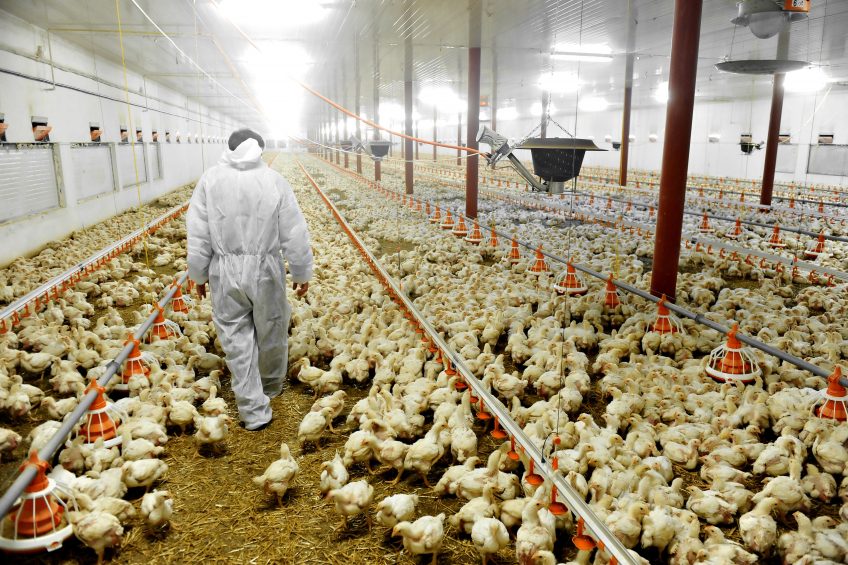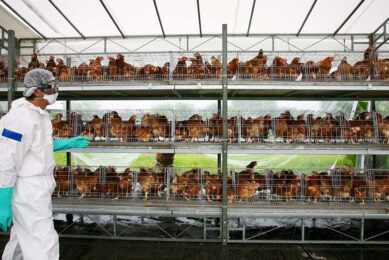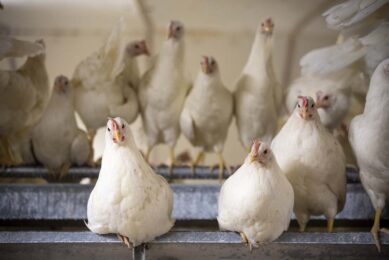Improving feed efficiency under stress conditions

Due to the wide variety of stressing conditions, it is very difficult to solve this with a unique and single mode of action. Among the possible options, nutrition can play an important role.
Optimising feed efficiency is crucial to maintain farm profitability, especially in the current volatile market. Several reasons can affect feed efficiency and some of them are caused by oxidative stress and/or inflammation. These reasons include sanitary pressure, vaccinations, feed transitions, weather conditions, transport, human manipulations and environmental changes. Under oxidative stress and inflammation, 30% of the performance drop is explained by the catabolism and feed conversion needed to manage inflammation. The other 70% is explained by a lower feed intake.
To evaluate the risk level of heat stress in poultry farms, CCPA Group developed a free heat stress application for smartphones, ThermoTool. With this app, breeders can anticipate heat stress over five days and quickly adapt, if necessary, the management of their farm and animal nutrition.
Examples of heat stress
Heat stress is a factor that may cause a drop of feed intake and may deteriorate feed conversion rate (FCR). Quinteiro-Filho in 2008 and 2010 showed that a 31°C temperature applied for 10 hours on 35-42 day old chickens leads to 25% less daily weight gain, 3% higher FCR, 20% less feed intake and 26% higher mortality rate.
Other studies showed also a high impact of heat stress on performances. For laying hens, many studies show that egg weight is impacted from 23°C (-0.4% between 23°C and 27°C; -0.8% >27°C), FCR deteriorates from 28°C and laying rate drops from 30°C. Therefore, reducing the acute inflammatory response and oxidative damage during stressing periods is necessary to improve egg production as well as growth.
A specific plant extract was selected by CCPA Group’s R&D team with interesting properties under oxidative stress and inflammation. The product, Axion Feedstim (international patent pending), is a phytogenic feed ingredient combining this concentrated extract and selected vitamins, trace elements and other synergistic plant extracts. Incorporated into complete feed, the product is developed to act at different levels (Figure 1):
Figure 1 – Phytogenic feed ingredient* action on cytokines modulation (in pink).

Its active substances have the ability to reduce cytokine production (especially TNFα and Il-1) and to modulate the level of inflammation. This modulation contributes to reduce protein muscle catabolism, to promote body temperature regulation and feed intake.
It can also capture and reduce the level of free radicals, causing oxidative stress. Indeed, it boosts the macrophage anti-oxidant capacity by inducing a specific expression of its genome (via intra-cellular superoxyde dismutase).
Trial results for layers and broilers
Trial 1: Experimental trial on laying hens (France, 2013)
In the trial, 72 laying hens (30 weeks old) were divided into 3 groups:
- Negative control group,
- Positive control group (with 400 ppm of oxytetracycline – OTC) and
- The group supplemented with the feed additive (2 kg/t of complete feed).
Laying hens were put under the same conditions for three weeks, and then were submitted to a heat stress: 35°C, 24 hours a day, for four days. After this period, normal conditions were restored for four weeks. The parameters measured were: feed intake, laying rate and FCR. Feed intake during heat stress was significantly higher with the product than OTC and control groups (+5 g/day and +7 g/day respectively), see Figure 2. Utilising the feed additive has a better positive effect on feed intake many days after heat stress: +10 g/day than in the control group, 3 days after heat stress and +2 g/day than in the control group, 7 days after heat stress.
The laying rate with the product was significantly higher, especially during heat stress than in the control group. Also, results between OTC and groups who have been fed the product tend to be equal. FCR is significantly lower when fed the product during and after heat stress than in the control group. FCRs with the additive and OTC groups are similar. Overall, the product allows a better feed efficiency and a better nutrient gut valorisation.
Trial 2: Field trial on broilers (Czech Republic, 2015)
In this trial, 1.2 million broilers were in the control group (34 batches) with classic feed versus 2 million animals for the trial group (60 batches) with classic feed and the product at 0.2% into complete feed. During the course of the trials, which were made under hot conditions (summer, >30°C), weight, feed conversion ratio and mortality were the parameters measured. The results, in Table 1, show that all criteria were improved with addition of the product. The slaughter age is significantly reduced, by almost one day, when fed the product. The FCR is significantly reduced by 3% for the trial group. The performance index is significantly better for the trial group: 339 versus 321 for the control group.
A nutritional approach such as Axion Feedstim – via its selected plant extracts – operates at different levels of the inflammatory process and enables to maximise feed intake, leading to a better FCR and animal comfort. In a market increasingly receptive to money savings, animal welfare and the respect of environment, this new approach is an interesting way to improve breeding profitability, for both layers and broilers.
Join 31,000+ subscribers
Subscribe to our newsletter to stay updated about all the need-to-know content in the poultry sector, three times a week. Beheer
Beheer








 WP Admin
WP Admin  Bewerk bericht
Bewerk bericht